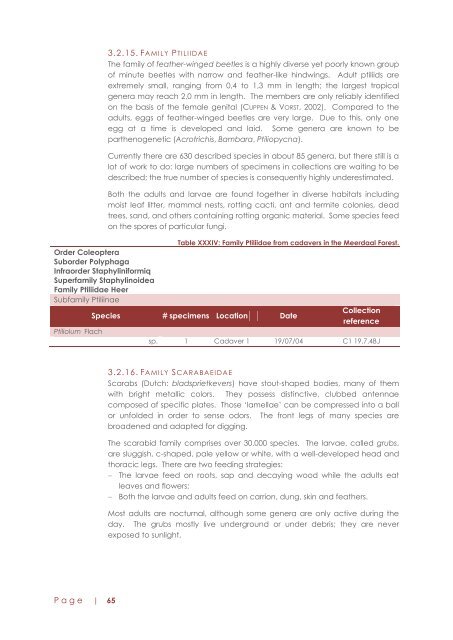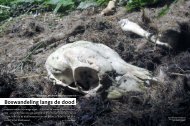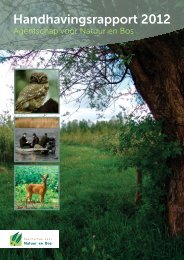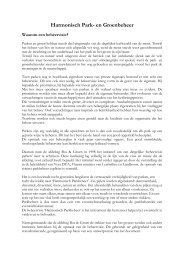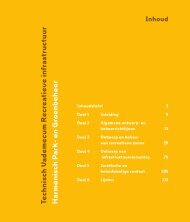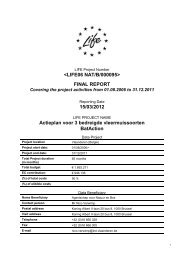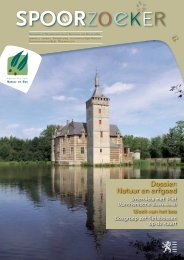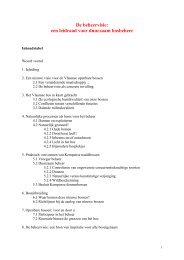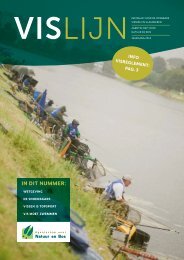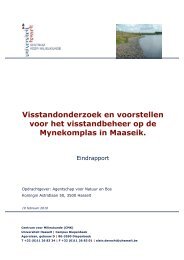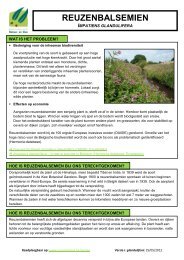LABOULBENIALES - Agentschap voor Natuur en Bos
LABOULBENIALES - Agentschap voor Natuur en Bos
LABOULBENIALES - Agentschap voor Natuur en Bos
Create successful ePaper yourself
Turn your PDF publications into a flip-book with our unique Google optimized e-Paper software.
Order ColeopteraSuborder PolyphagaInfraorder StaphyliniformiqSuperfamily StaphylinoideaFamily Ptiliidae HeerSubfamily PtiliinaePtiliolum Flach3.2.15. FAMILY PTILIIDAEThe family of feather-winged beetles is a highly diverse yet poorly known groupof minute beetles with narrow and feather-like hindwings. Adult ptiliids areextremely small, ranging from 0,4 to 1,3 mm in l<strong>en</strong>gth; the largest tropicalg<strong>en</strong>era may reach 2,0 mm in l<strong>en</strong>gth. The members are only reliably id<strong>en</strong>tifiedon the basis of the female g<strong>en</strong>ital (CUPPEN & VORST, 2002). Compared to theadults, eggs of feather-winged beetles are very large. Due to this, only oneegg at a time is developed and laid. Some g<strong>en</strong>era are known to beparth<strong>en</strong>og<strong>en</strong>etic (Acrotrichis, Bambara, Ptiliopycna).Curr<strong>en</strong>tly there are 630 described species in about 85 g<strong>en</strong>era, but there still is alot of work to do: large numbers of specim<strong>en</strong>s in collections are waiting to bedescribed; the true number of species is consequ<strong>en</strong>tly highly underestimated.Both the adults and larvae are found together in diverse habitats includingmoist leaf litter, mammal nests, rotting cacti, ant and termite colonies, deadtrees, sand, and others containing rotting organic material. Some species feedon the spores of particular fungi.Table XXXIV: Family Ptiliidae from cadavers in the Meerdaal Forest.Species # specim<strong>en</strong>s Location DateCollectionrefer<strong>en</strong>cesp. 1 Cadaver 1 19/07/04 C1 19.7.4BJ3.2.16. FAMILY SCARABAEIDAEScarabs (Dutch: bladsprietkevers) have stout-shaped bodies, many of themwith bright metallic colors. They possess distinctive, clubbed ant<strong>en</strong>naecomposed af specific plates. Those „lamellae‟ can be compressed into a ballor unfolded in order to s<strong>en</strong>se odors. The front legs of many species arebroad<strong>en</strong>ed and adapted for digging.The scarabid family comprises over 30.000 species. The larvae, called grubs,are sluggish, c-shaped, pale yellow or white, with a well-developed head andthoracic legs. There are two feeding strategies:The larvae feed on roots, sap and decaying wood while the adults eatleaves and flowers;Both the larvae and adults feed on carrion, dung, skin and feathers.Most adults are nocturnal, although some g<strong>en</strong>era are only active during theday. The grubs mostly live underground or under debris; they are neverexposed to sunlight.P a g e | 65


